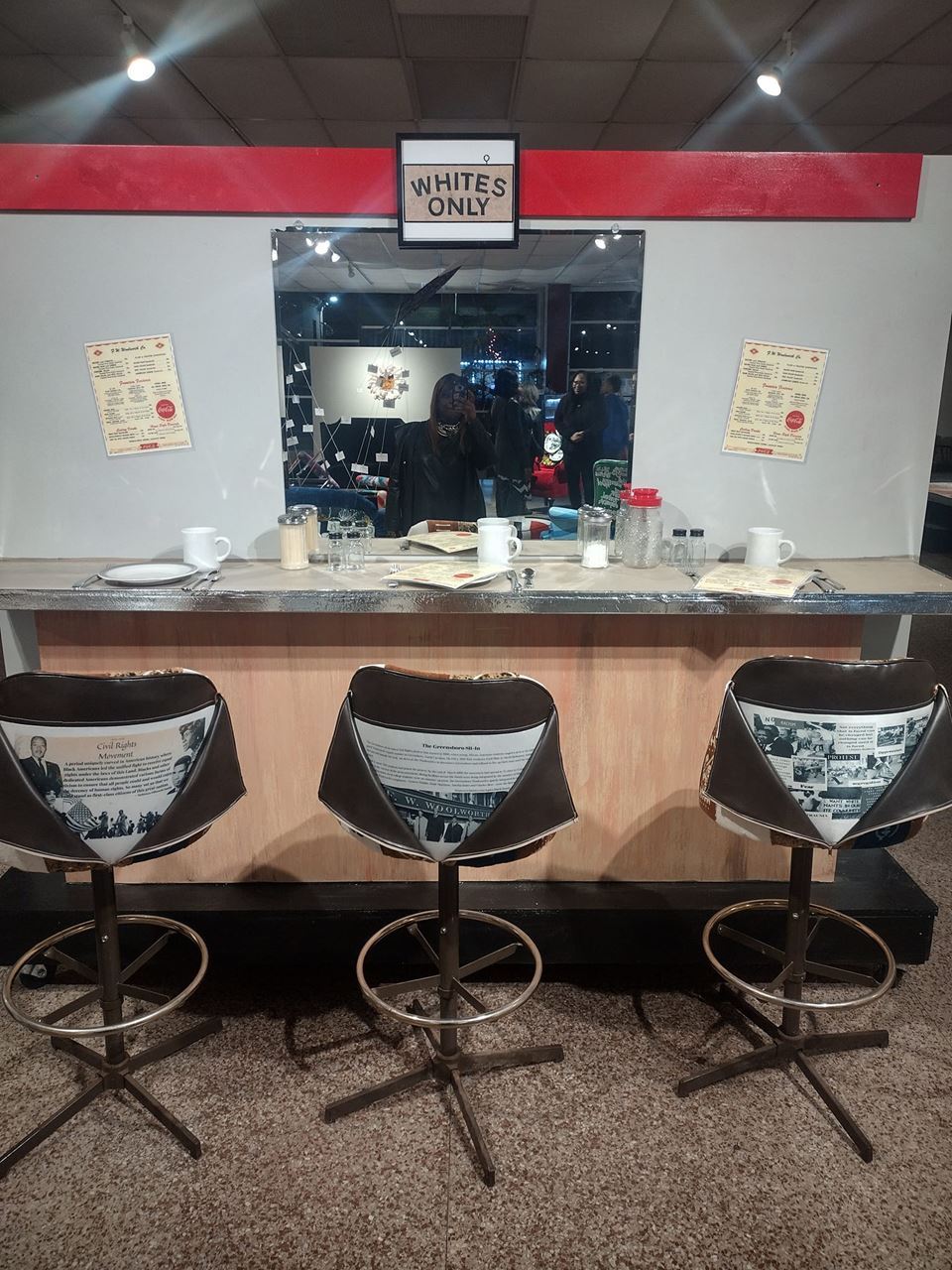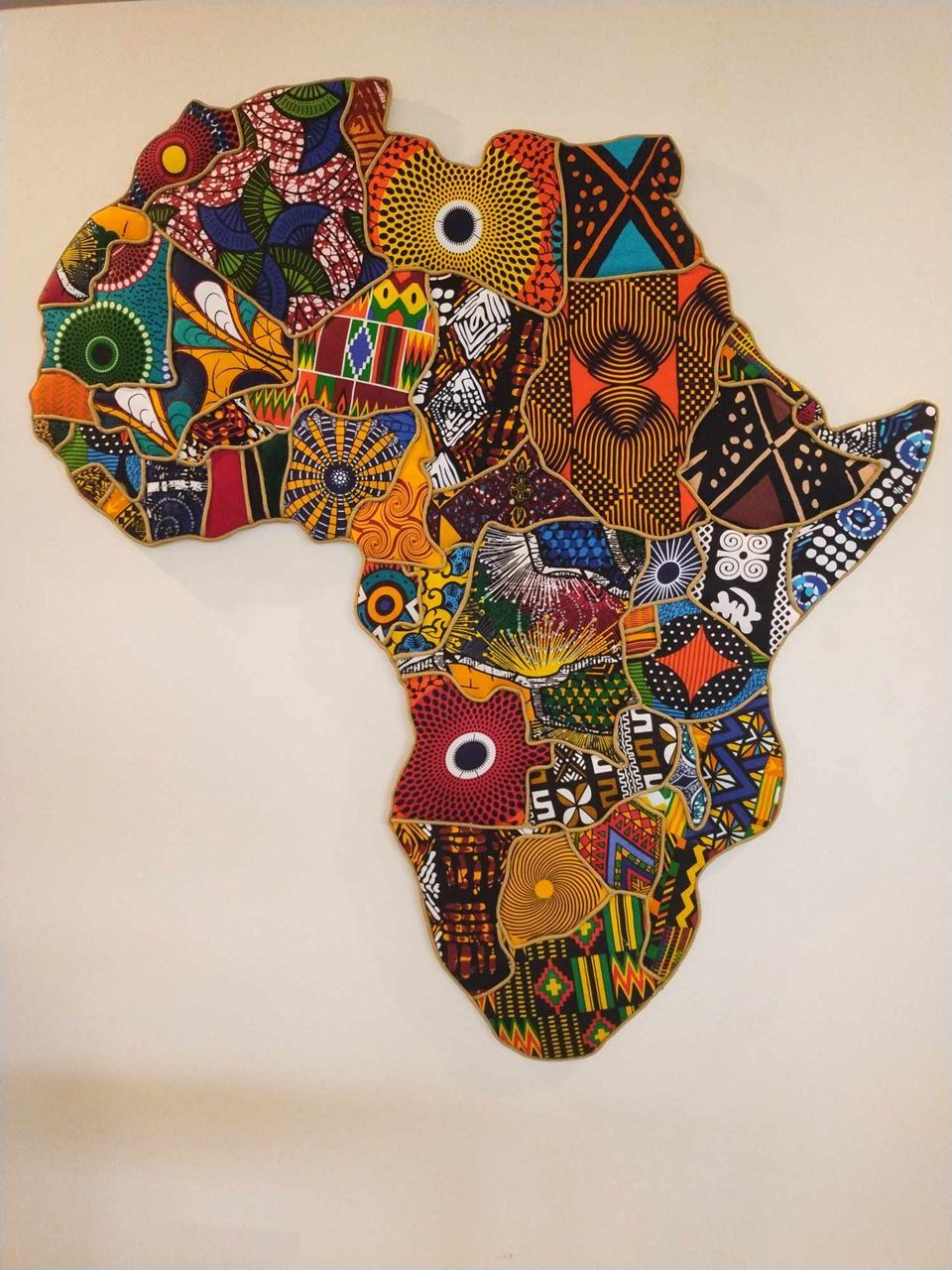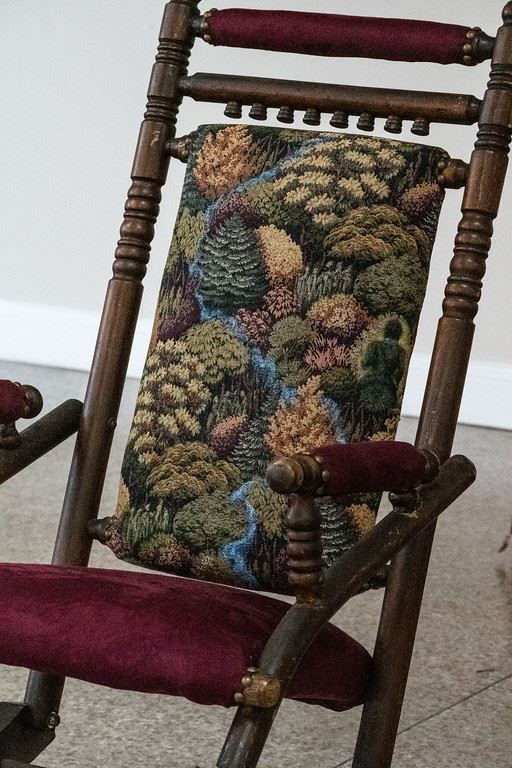How Jamika Smith uses upholstery to transform more than just furniture.
By Keaven Willa Hartt

Jamika Smith, of Teena’s Legacy, based in Gary, Indiana, has been using upholstery in activism for the past decade. Honoring the memory of her entrepreneurial grandmother, Alberteen, after whom the foundation is named, Jamika shares the can-do spirit of “Teena”, who never met a roadside castoff that she couldn’t see the potential in - something I’m sure many of us in the upholstery trade can relate to.
A self-taught seamstress, among many other things, Teena turned other people’s trash into treasures, and Jamika grew up watching her grandmother showcase all of her latest work in a makeshift showroom in the garage. From an early age, Teena encouraged Jamika to get her hands dirty and see the possibilities in things that others had cast aside.
Fast forward to the years of Teena’s Legacy, a non-profit she formed in 2013, Jamika has been doing just that. And her projects encompass more than just curbside frames in need of a makeover; she also sees the potential in people that society has long overlooked and underserved. She sees upholstery as a tool to engage and uplift young people, disenfranchised people, unhoused people, and anyone else willing to pick up a staple gun and try their hand at a new skill.

In the ten years that she’s run her non-profit, Jamika says she has “worked with all ages, from Kindergarten to 70+, and all races, and genders.” She says “it just evolved, in the spirit of: if you want to learn it, I will share it.” Most of her work has been with high-school age girls, with whom she uses upholstery to instill confidence and generate positive self-image.
As if the day to day operations of her non-profit weren’t enough, Jamika set a steep goal for herself last year: to push out a huge number of pieces, all custom, all with a story, and bring together a number of collaborators, to put on a show stopping exhibit at the Marshall J. Gardner Center for the Arts. The show was called Blooming Out of Trauma: The Intersection of Upholstery and Activist Art, and it opened in February, just in time for Black History Month.
 In addition to modern art fused with upholstered pieces, the show shared a lot of history. A very human history, with all its flaws and unsightly moments. The works were meant to start conversations, and to push people out of their comfort zones; to make them learn, question, and look deeper.
In addition to modern art fused with upholstered pieces, the show shared a lot of history. A very human history, with all its flaws and unsightly moments. The works were meant to start conversations, and to push people out of their comfort zones; to make them learn, question, and look deeper.
The collaborations were with local artists, who she says she chose in part because she “knew that it would be more powerful if it was a collective effort. There are a lot of artists out there that do amazing work, but have a hard time sharing their work. So, since [she had] the space, why not share the space with those artists?” She wanted the exhibit to be intergenerational, too: “The youngest artist was 17, and the oldest was 65. We had men and women. We had different mediums; tie-dye, oil paint, sculpture, leather burning.” The only criteria the works had to meet was that they followed the theme of the show: Blooming Out of Trauma.
Jamika knew that the show could be a little controversial, and is proud of the many responses it produced. It evoked a variety of emotions in people, from anger to sadness, joy to intrigue, hope to shame. Of course it is unfortunate that some people responded to the art by taking action against it, but that has always been the case with poignant artwork, and it just goes to show that the trauma is real, and these conversations are important to have. The exhibit was an acknowledgement of the past, not an endorsement of it.
 One of the exhibits that caused the biggest stir was a piece titled “Woolworth Lunch Counter”, which spoke to how African and Black History is often covered up. Three bar stools lined the counter, upholstered in hand-sewn, hand-painted mudcloth, from the country of Mali, paired with cream leather. The chairs each had a printed piece of the Woolworth sit-ins from the Civil Rights Movement on their backs, with a zippered portion, allowing the viewer the option to cover up the history or leave it exposed. Complete with a “white’s only” sign above the counter, and a mirror reflecting the visitors, which forced them to see themselves within that uncomfortable history. As one of the largest installations of the exhibit, Jamika says “a lot of people really gravitated toward the Woolworth lunch counter. They appreciated the concept and the meaning behind it, but they also appreciated the message of how we tend to overlook or cover up our history.” When you look at your reflection in the mirror over the counter, Jamika says “there are these emotions that start to come up.” She arrived at the gallery one day to find the “white’s only” portion of the exhibit covered up, because it made someone that uncomfortable. “Which is the point. The point is, how you push through that.”
One of the exhibits that caused the biggest stir was a piece titled “Woolworth Lunch Counter”, which spoke to how African and Black History is often covered up. Three bar stools lined the counter, upholstered in hand-sewn, hand-painted mudcloth, from the country of Mali, paired with cream leather. The chairs each had a printed piece of the Woolworth sit-ins from the Civil Rights Movement on their backs, with a zippered portion, allowing the viewer the option to cover up the history or leave it exposed. Complete with a “white’s only” sign above the counter, and a mirror reflecting the visitors, which forced them to see themselves within that uncomfortable history. As one of the largest installations of the exhibit, Jamika says “a lot of people really gravitated toward the Woolworth lunch counter. They appreciated the concept and the meaning behind it, but they also appreciated the message of how we tend to overlook or cover up our history.” When you look at your reflection in the mirror over the counter, Jamika says “there are these emotions that start to come up.” She arrived at the gallery one day to find the “white’s only” portion of the exhibit covered up, because it made someone that uncomfortable. “Which is the point. The point is, how you push through that.”

Another part of the exhibit that caused notable reactions was a large wall hung map of Africa, titled Motherland, which was handmade by Jamika herself. Measuring an impressive 60 inches by 40 inches, each country in the continent was individually cut out of plywood, then upholstered in vibrant African print fabrics from Ghana, and trimmed with gold piping. This piece was all about how rich the “Motherland” is, and how that richness has been exploited over centuries of theft and greed. There was literature accompanying the wall mounted work, which explained the history of slavery, and how the Catholic Church had ordained slavery. That literature was removed from the exhibit, and had to be replaced. “It’s history. It doesn’t change if you hide it,” Jamika says. “We’ve tiptoed around this, but we should talk about it. Everyone has their own prejudice; we’re human. The question is, what do you do with it?” Being aware of historical facts doesn’t change them. We have to acknowledge our mistakes to learn from them, just as we do when we are tearing down and rebuilding furniture. Pretending the mistakes were never made doesn’t result in quality upholstery, and the same can be said when learning from our shared history.

Although there was discomfort felt by some attendees, there were also moments of great coming-together and healing. Over 100 people attended the opening of the exhibit, and there were other wonderful moments of community building in the weeks that followed. There were events held in the space, like an African dance session, a Black Experience Poetry Night, and a 7th grade art class field trip, where 39 students participated in a scavenger hunt, and a “sip and paint.”
If she had to choose a favorite piece in the exhibit, Jamika says she would pick the Harriet Tubman piece; an antique rocking chair covered in an original tapestry made of multicolored forest scenery, with a hidden message waiting to be found within. Jamika says this is her favorite “because it was so subtle and powerful at the same time. In order for you to get the message, you really had to LOOK, and pay attention to what the chair was saying.” She says a lot of people just glanced over this, and took the old, antique rocker at face value. But some people looked a bit deeper, and once they did, they were blown away by the messages sharing the history of Harriet Tubman and the Underground Railroad, which is what made it so powerful; “the reaction from people once they got it.”

With the major success of this exhibit under her belt, Jamika is going to “keep using upholstery for activism, as a different way to start conversations.” She is looking for a grant to continue her apprenticeship program. She envisions hiring a few young women, who will act as Teena’s Legacy Ambassadors, going from school to school to spread the word, and hopefully recruit others to help to continue this important work.
When asked what the end goal is, Jamika says she doesn’t expect everyone who goes through her workshops to become upholsterers. It’s more about learning how capable they are, and how possible it is to change things with their own two hands. “Upholstery isn’t for everybody… We are a special breed of individuals, and not everyone wants to do this after the workshops. But during the process they learn a lot about themselves, what they like, what they don't like, what they want, and don't want.”